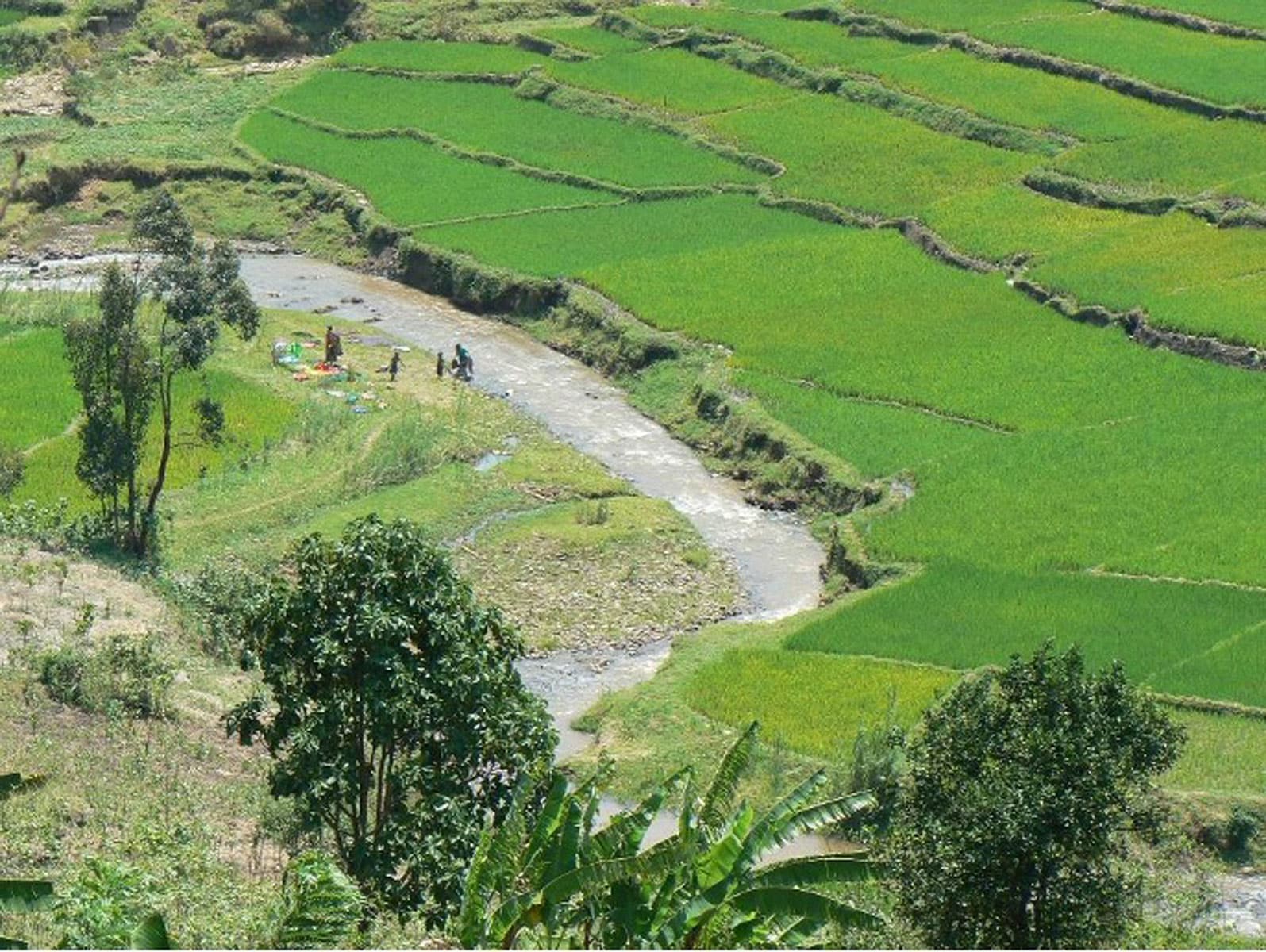Rwanda is known worldwide for its tragic history—the civil war and genocide that nearly destroyed the country. Today, it is equally renowned for its remarkable recovery and comeback story. Now regarded as one of the safest and most stable countries in sub-Saharan Africa, Rwanda is increasingly drawing tourism and outside investment. But that doesn’t mean it has resolved all of its long-standing problems, and one of our grant applicants is working on one of them.
Rwanda is one of Africa’s most densely populated nations, and its fast-growing population is overwhelmingly employed in smallholder agriculture. Dr. Er. Derrick Bugenimana, an agricultural researcher at the University of Rwanda, estimates that at least 64% of the population farms for a living. He’s concerned that the ever-looming threat of climate change risks altering rainfall patterns in ways that could damage Rwanda’s food security.
To fight this threat, Dr. Bugenimana submitted a research grant proposal to Grow Further outlining his plans to promote “integrated water resources management”, or IWRM, as a means to mitigate against the damages brought by global warming. Bugenimana’s application has advanced to the peer review stage of our evaluation process.
Grow Further is still reviewing a select few of the hundreds of grant applications we received earlier this year. As we narrow down the list of promising research proposals, several inspiring innovators in smallholder agriculture, including Dr. Bugenimana, have kindly agreed to speak with us to better explain their visions.
IWRM, as he explained, “focuses on three principles,” namely social equity, economic efficiency, and environmental sustainability. But there’s more to it. “IWRM is a process that encourages the coordinated development and management of water, land, and related resources,” he said, “in order to maximize the resultant economic and social welfare in an equitable manner without compromising the sustainability of important ecosystems”.
Rwanda’s reforms underway
Rwanda’s government is in the midst of an ambitious nationwide overhaul of its agricultural economy. The project aims to solidify farmers’ titles over land tenure and improve the yields of select crops. Bugenimana told us that the government’s plan is pretty solid, but it’s being held back by forces beyond Kigali’s control.
“Rwanda’s main limiting production factor is land,” he said. “Agriculture growth requires an increase in profits per hectare and the capture of productivity gains along the value chain. Raising profits per hectare means increasing agricultural yields and switching to higher-value agricultural commodities, such as horticulture, vegetable, poultry, pork, and fisheries by using available resources and IWRM.”
IWRA is a process that encourages the coordinated development and management of water, land, and related resources, in order to maximize the resultant economic and social welfare.”
So how would IWRM enhance Rwanda’s farms and serve as a hedge against climate change? Bugenimana provided one good example: stormwater management.
“IWRM may use mechanical measures of soil and water conservation, like conventional grey infrastructure, storm sewers, and green or nature-based infrastructure, bench terraces, etc.,” he explained to us. It’s all about improving farm irrigation via flexible, creative means. Other options, he added, include “biological soil and water conservation measures, agricultural techniques that prevent soil erosion.” Examples of some biological measures he’s considering include promoting the growth of erosion-reducing grasses, afforestation, and reforestation.
Making improvements in farming stick
Essentially, Bugenimana’s strategy is to develop and disseminate methods for Rwanda’s smallholder farmers to conserve water when the rains come, for effective use later on when they don’t. “Water conservation techniques are a crucial component of an IWRM strategy,” he told us. “Regulations, education, outreach, and incentives should be used in water conservation strategies to handle both indoor and outdoor water problems.”
But the very first step is data collection and analysis, he stressed. Bugenimana says he and his research team must first conduct a water quality assessment, calculate the average volume of water flowing in Rwanda’s rivers, collect information on what inputs farmers are using and how much (meaning fertilizers and pesticides), and then determine how these inputs are affecting water quality and what methods might protect Rwanda’s water resources.
Dr. Bugenimana told us that available data suggests the Rwandan government’s agriculture reform drive has boosted farm yields by nearly 17%. But more needs to be done to make these improvements permanent; thus, his application to Grow Further and his plans for developing and encouraging effective IWRM throughout Rwanda’s smallholder farming regions.
“Agriculture transformation requires research and innovation as well as farmers’ knowledge and skills to support specialization in IWRM, intensification, diversification, and value addition,” Bugenimana replied when we asked him why his specific project is needed.
“Farmer’s organizations are strengthened to exert their bargaining power and provide services to their members in developing modern agri-businesses”. It’s also about equity, he added. “In order to reach more women, and thus generate rural jobs and income, skills development and incentives for agribusiness entrepreneurship will be fostered.”
— Grow Further
Photo credit: An irrigated rice farm near Kamambe, Rwanda. Henk Bremen, International Fertilizer Development Center (IFDC).




